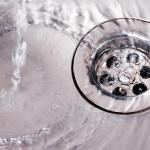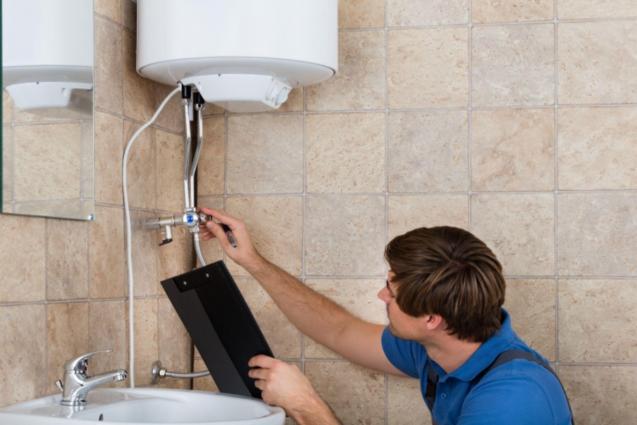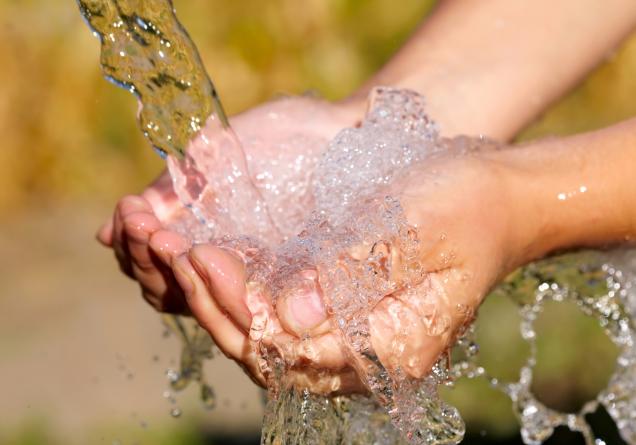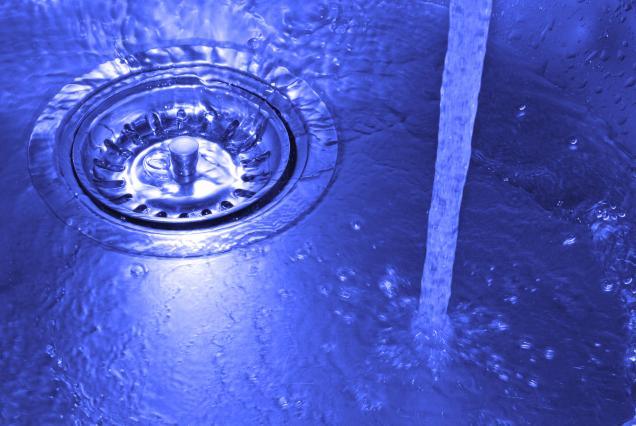
Prevent Clogged Drains: Easy DIY Maintenance
By Fluid Plumbing|May 24, 2024
Regardless of a home's size and architectural design, the plumbing system is indispensable in ensuring the residence stays functioning. A critical part of this infrastructure is the drainage system. An issue frequently affecting drains is clogging, an issue of substantial inconvenience in kitchens, bathrooms, and other linked facilities. Encountering clogged drains is not uncommon; however, with adequate knowledge, these troubles can be handled in time. From implementing regular maintenance to addressing burgeoning clogs, there are DIY solutions every homeowner can execute effectively. Throughout this article, we will unfold each of these measures in depth, illustrating that by adhering to these effective practices, you command a significant influence over your pipe system's efficiency, thus mitigating potential plumbing costs.
Understanding How Drain Clogs Form
A fundamental step to warding off drain clogs is understanding their formation. At a basic level, clogs materialise when solid matter or viscous liquids obstruct the drains, barring the desired water flow. A classic example is a build-up of residual oil, fat, and grease from cooking activities that solidify and block kitchen sinks. Bathroom drains, on the other hand, commonly face issues from an assortment of tangled hair, soap remnants, and other minute particulates washed away in the shower. Occasionally, the accidental slippage of small solid objects down the drain creates stubborn blockages. Unattended, these blocks trigger detrimental consequences not just for the specific drain but the entire plumbing system, warranting hefty repairs.
Essential Tools for DIY Drain Maintenance
The right tools are indispensable allies in DIY drain maintenance. The basic items that should feature in your toolkit include a plunger, a plumber's snake or hand auger, and a drain claw. Each tool has a specific purpose—the plunger aids simple block removal, the plumber's snake or hand auger is employed for intricate clogs, and the drain claw assists in pulling out debris like hair bundles. Wearing protective goggles and rubber gloves is recommended to ensure safety during such operations.
Finding high-quality tools is an essential aspect to consider. These can usually be sourced from local hardware suppliers. The price range can vary based on individual tool brands, but decent-quality instruments can be procured within $10-$50. Investing in these tools might feel stringent initially but it can lead to significant cost savings in the long run.
Step-by-Step Guide to Regular Drain Cleaning
The recommended route is to maintain a clean drainage system through routine checks instead of resorting to remedial actions only when a blockage occurs. Start by removing visible clog-forming material from the drain entrance. Then utilise a plunger to address the less stubborn clogs. Before plunging, remember to close off any overflow drains to create a vacuum. Still dealing with a blockage? A drain snake or a drain claw should do the job, helping you reach deeper into the pipe. Observing a monthly maintenance routine prevents blockages from solidifying and retains the operational efficiency of your drains, hence averting undue expenses and inconvenience.
DIY Solutions to Unclog Your Drains
Dealing with an immediate, stubborn clog? Here are a few action points. One proven DIY method is mechanically de-clog using a plunger or drain snake. While these tools generally succeed in eliminating blockages, you may need a plumber to look at severe blockages. Consider a homemade drain cleaner by mixing equal parts vinegar and baking soda. When left in the drain for about half an hour, this mix can disintegrate the clog, which can then be flushed down with hot water. Lastly, prioritise safety during these attempts by wearing proper protective measures. Don't be disheartened if initial efforts don't yield results. Calling in for professional help isn't a defeat but an important step in preventing further damage to your pipes.
Preventive Measures to Keep Your Drains Free-flowing
While de-clogging drains is essential, preventing clogs from forming in the first place is just as pivotal. Discard cooking fats, ground coffee, and other similar waste in the garbage, not the sink. Consider installing drain screens to catch harmful materials before they enter your pipes. Applying enzyme-based drain cleaners once every month can also safeguard your drain health. Imbibing these small, easy-to-follow daily habits can protect your drains from clogging, saving time, effort, and resources.
Conclusion
The adverse effects of clogged drains can extend far beyond personal inconvenience. Implementing regular maintenance practices and addressing blockages at their inception are easy yet effective steps toward achieving a smooth-functioning plumbing system. Embracing a prevent-over-cure attitude not only prolongs the life of your drains but also largely negates the need for professional help, thereby sparing your purse. By regularly acting in the best interest of your pipes, and not just in crises, you're investing the effort that assures the integrity of your plumbing system - leading to a satisfying home maintenance journey.
Understanding How Drain Clogs Form
A fundamental step to warding off drain clogs is understanding their formation. At a basic level, clogs materialise when solid matter or viscous liquids obstruct the drains, barring the desired water flow. A classic example is a build-up of residual oil, fat, and grease from cooking activities that solidify and block kitchen sinks. Bathroom drains, on the other hand, commonly face issues from an assortment of tangled hair, soap remnants, and other minute particulates washed away in the shower. Occasionally, the accidental slippage of small solid objects down the drain creates stubborn blockages. Unattended, these blocks trigger detrimental consequences not just for the specific drain but the entire plumbing system, warranting hefty repairs.
Essential Tools for DIY Drain Maintenance
The right tools are indispensable allies in DIY drain maintenance. The basic items that should feature in your toolkit include a plunger, a plumber's snake or hand auger, and a drain claw. Each tool has a specific purpose—the plunger aids simple block removal, the plumber's snake or hand auger is employed for intricate clogs, and the drain claw assists in pulling out debris like hair bundles. Wearing protective goggles and rubber gloves is recommended to ensure safety during such operations.
Finding high-quality tools is an essential aspect to consider. These can usually be sourced from local hardware suppliers. The price range can vary based on individual tool brands, but decent-quality instruments can be procured within $10-$50. Investing in these tools might feel stringent initially but it can lead to significant cost savings in the long run.
Step-by-Step Guide to Regular Drain Cleaning
The recommended route is to maintain a clean drainage system through routine checks instead of resorting to remedial actions only when a blockage occurs. Start by removing visible clog-forming material from the drain entrance. Then utilise a plunger to address the less stubborn clogs. Before plunging, remember to close off any overflow drains to create a vacuum. Still dealing with a blockage? A drain snake or a drain claw should do the job, helping you reach deeper into the pipe. Observing a monthly maintenance routine prevents blockages from solidifying and retains the operational efficiency of your drains, hence averting undue expenses and inconvenience.
DIY Solutions to Unclog Your Drains
Dealing with an immediate, stubborn clog? Here are a few action points. One proven DIY method is mechanically de-clog using a plunger or drain snake. While these tools generally succeed in eliminating blockages, you may need a plumber to look at severe blockages. Consider a homemade drain cleaner by mixing equal parts vinegar and baking soda. When left in the drain for about half an hour, this mix can disintegrate the clog, which can then be flushed down with hot water. Lastly, prioritise safety during these attempts by wearing proper protective measures. Don't be disheartened if initial efforts don't yield results. Calling in for professional help isn't a defeat but an important step in preventing further damage to your pipes.
Preventive Measures to Keep Your Drains Free-flowing
While de-clogging drains is essential, preventing clogs from forming in the first place is just as pivotal. Discard cooking fats, ground coffee, and other similar waste in the garbage, not the sink. Consider installing drain screens to catch harmful materials before they enter your pipes. Applying enzyme-based drain cleaners once every month can also safeguard your drain health. Imbibing these small, easy-to-follow daily habits can protect your drains from clogging, saving time, effort, and resources.
Conclusion
The adverse effects of clogged drains can extend far beyond personal inconvenience. Implementing regular maintenance practices and addressing blockages at their inception are easy yet effective steps toward achieving a smooth-functioning plumbing system. Embracing a prevent-over-cure attitude not only prolongs the life of your drains but also largely negates the need for professional help, thereby sparing your purse. By regularly acting in the best interest of your pipes, and not just in crises, you're investing the effort that assures the integrity of your plumbing system - leading to a satisfying home maintenance journey.



